Tagged With ‘leather’
Guerlain
Derby
21 August, 2015
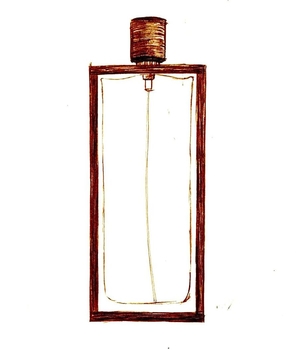 What a great perfume this is. Rich and complex yet totally wearable, Derby smells of old-fashioned luxury and style. It’s the kind of perfume that should have been name-checked in The Great Gatsby (surely the worst-written major novel of the 20th century), and yet it was first launched as recently as 1985, when electropop ruled the airwaves and shoulder-pads the size of aircraft carriers filled the pages of the fashion magazines.
What a great perfume this is. Rich and complex yet totally wearable, Derby smells of old-fashioned luxury and style. It’s the kind of perfume that should have been name-checked in The Great Gatsby (surely the worst-written major novel of the 20th century), and yet it was first launched as recently as 1985, when electropop ruled the airwaves and shoulder-pads the size of aircraft carriers filled the pages of the fashion magazines.
It was created by Jean-Paul Guerlain, the last member of the family to run the brand and a great perfumer in his own right: his other triumphs include Habit Rouge, Chamade and the fantastic Vétiver. Derby smells like crushed aromatic herbs when you first spray it on: rosemary and lavender with a hint of mint, but mixed with more exotic things like patchouli and sandalwood. Mace and pepper add a tiny touch of spice, while oakmoss, leather and vetiver give it extra depth and staying-power. After a while it smells more leathery than anything else, though still with herbs and spices mixed in – the scent of a Greek mountainside in summer.
For a long time Derby was quite hard to track down, which added to its mystique, but in 2005 Guerlain relaunched it as part of its Parisiens collection, at which point is was probably (though of course perfume companies never tell you these things) slightly ‘tweaked’ to change some of its ingredients (such as oakmoss) to comply with EU legislation. In 2011 it was repackaged in what I think is a rather cheap-looking balsawood frame, and its price went up as well: today it’s one of Guerlain’s most expensive fragrances, which I think is a shame, as it deserves to be widely worn.
Christian Dior
Jules
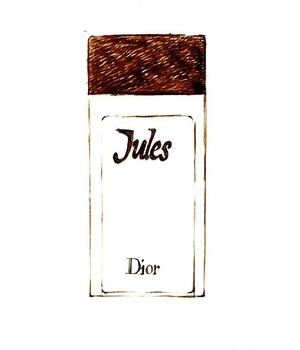 Sage isn’t everyone’s favourite herb, though turkey stuffing wouldn’t the same without it. It’s used less often in perfumery than in cooking, but Jules shows what a great ingredient it can be in the hands of a brilliant perfumer.
Sage isn’t everyone’s favourite herb, though turkey stuffing wouldn’t the same without it. It’s used less often in perfumery than in cooking, but Jules shows what a great ingredient it can be in the hands of a brilliant perfumer.
The ‘nose’ in this case was Jean Martel, who worked for the French fragrance company Givaudan in the 1970s and 1980s and deserves to be far better known, not least because he also created that 1970s classic, Paco Rabanne for Men.
Jules was launched in 1980, with a brilliant advertising campaign featuring posters by René Gruau, arguably the greatest fashion illustrator of the last century, which helped the first bottles sell out in record time. Martel combined sage (which has a slightly catty smell) with cedar and other things like wormwood, lavender and bergamot. To me the result smells like sage and slightly peppery leather, though there’s a long list of other ingredients, including cumin, sandalwood, oakmoss, jasmine, musk and rose.
Despite its initial success, Jules has since been overshadowed by the success of Kouros, which was launched the following year. Created for Yves Saint Laurent by the brilliant Pierre (Cool Water) Bourdon, Kouros shares Jules’ clean / dirty / sexy character, and both scents belong to the same fragrance ‘family’, the fougères – a style of perfumes, usually aimed at men, based on a combination of lavender and coumarin (originally derived from tonka beans but usually synthesised).
Of course, Kouros’ ongoing popularity may be because it’s inherently superior to Jules, but actually I think it’s more to do with the fact that over the years Kouros has benefited from regular advertising, while Dior seems to have forgotten that Jules ever existed, which I think is a terrible shame.
To make matters worse, while you can buy Kouros pretty much anywhere, Jules has become ridiculously hard to find: I don’t know anywhere in the UK that sells it, and even in Paris the only place that seems to stock it is the department store Bon Marché, though you can buy it from Dior’s French website. Given Dior’s apparent lack of interest, it’s a wonder it hasn’t been discontinued, but I’m glad it’s still on sale, even if it’s now a rarity.
I can only hope that one day they decide to invest in promoting it again and making it available to all – but in the meantime if you want something special that very few other people will have, get over to Bon Marché.
Knize
Knize Ten
8 May, 2015
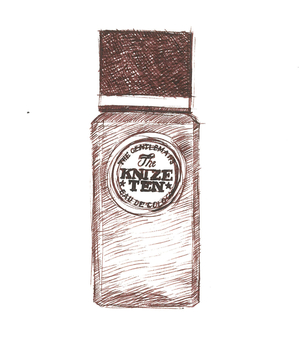
The year 1924 was a great one for perfume, if only because it saw the launch of both Chanel’s sumptuous Cuir de Russie and this, the wonderful Knize Ten. That both have survived into the present day is a bit of a miracle, but though they’re both usually placed in the ‘leather’ category of fragrances, they could hardly be less similar.
Cuir de Russie is a wonderfully rich and complex perfume, but its oddly androgynous combination of smoke and leather with a heavy floral note can make it rather difficult to wear. Knize Ten is a much more immediately appealing, fresher-smelling scent, and its leatheriness is tempered with the kind of zesty and herbal ingredients you’d expect to find in a classic eau-de-cologne – things like bergamot, lemon and geranium.
These gradually fade away on the skin, leaving a lovely, long-lasting but not overpowering leathery scent, less smoky than it is sweet. To me it also has a strong whiff of heliotrope – those electric-blue park bedding plants whose cherry-pie scent can be so intoxicating on a hot still high-summer’s day – but others may detect more than a hint (if I remember it right) of Plasticine; not unpleasant in itself, but enough to add a touch of childhood to the mix.
If Cuir de Russie is a testament to the genius of Ernest Beaux (whose greatest triumph was Chanel No 5), then Knize Ten is a fitting monument to François Coty (the mass-market perfume pioneer) and his brilliant technical director, Vincent Roubert (who had previously worked with Ernest Beaux in Grasse, then the perfume capital of France). It was commissioned, rather unusually, by a bespoke men’s tailoring company from Vienna, Knize, whose boutique is still going strong today. I’d wondered whether Knize Ten was the sole survivor of nine other fragrances, but it turns out that the name was dreamed up by their advertising director of the time, who beat Ralph Lauren by at least 50 years by seeking to associate the company with the aristocratic imagery of polo: the name ‘Ten’ was chosen to reflect the highest handicap in the game.
I love everything about Knize Ten: not just its instantly appealing smell but the smart glass bottle, with its crisply bevelled corners and chunky black cube of a cap. I’ve read somewhere that, like the company’s Viennese store, it was designed by the legendary Austrian architect Adolf Loos, and although that seems like wishful thinking it could be true; Loos designed further shops for Knize in Paris and Berlin, so their association was obviously close, and the dates look perfectly plausible too.
Even the typography of the label – a bold slab serif in a Victorian playbill style – is punchy and confident, just like the perfume inside. And while it’s far less widely available than it deserves to be, it’s not even that expensive by contemporary standards: what’s not to like?
Hermès
Cuir d’Ange
27 April, 2015
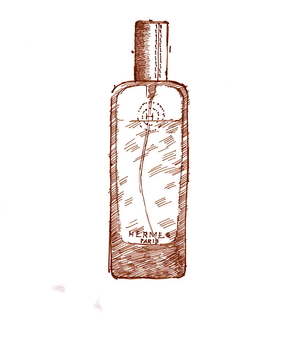 The latest addition to the Hermessences range, created by in-house perfumer Jean-Louis Ellena for Hermès and launched in 2014, Cuir d’Ange is, as its name suggests, a rather ethereal take on the smell of new leather – appropriately enough for a company that started out making riding tackle.
The latest addition to the Hermessences range, created by in-house perfumer Jean-Louis Ellena for Hermès and launched in 2014, Cuir d’Ange is, as its name suggests, a rather ethereal take on the smell of new leather – appropriately enough for a company that started out making riding tackle.
Inspired by a phrase in Jean le Bleu, a 1932 novel by Jean Giono – a kind of French Thomas Hardy – Ellena explains that, for Cuir d’Ange, ‘Using the smells that are my words, I wanted to write a poem to rekindle the love duet between leather and the skin. Its softness and lightness, its tension and its caress. Heliotropes and hawthorn, leather and musk.’
This particular leather smells slightly sweet and rather papery, a bit like skin, which I guess makes sense. I’d like it more if didn’t also include the faintly sweaty smell of hay, which reminds me of another Hermès fragrance, Narcisse Bleu (the hay smell coming from narcissus flowers), but like the other perfumes in the range it’s subtle and sophisticated if, arguably, a little too polite: smart without being particularly sexy. Which, when you come to think of it, makes it a perfect complement to an Hermès suit and tie. But oh for a touch of vulgarity!
Acqua di Parma
Colonia Leather
26 February, 2015
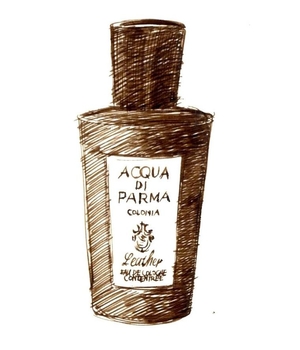 The smell of leather is one of the staples of men’s fragrances. It has an interesting history, too, since at least one of the roots of modern perfumery can be followed back to the perfumed-leather gloves that became fashionable from the sixteenth century on.
The smell of leather is one of the staples of men’s fragrances. It has an interesting history, too, since at least one of the roots of modern perfumery can be followed back to the perfumed-leather gloves that became fashionable from the sixteenth century on.
Some ‘leather’ fragrances are more successful than others, Chanel’s powerful and historic Cuir de Russie being one of the best. But until the launch of Colonia Leather in May 2014 I’d never come across a perfume that really captured clean new leather’s comfortingly aromatic smell.
I have to admit that this came as something of a surprise, as I’m not a great fan of the other perfumes in the Acqua di Parma range. I can recognise their quality, and I love their packaging, but their combination of lemon and rose just doesn’t do it for me – the rose seems just too feminine a counterpart to the freshness of the classic citrusy eau-de-cologne.
So I could hardly believe my nose when I first sprayed Colonia Leather on. Yes, it contains a definite hint of the Acqua di Colonia signature rose-cologne smell, but that’s quickly overlaid by a beautifully smooth, refined leather smell, like the finest fresh kidskin gloves, or an unjustifiably expensive suede jacket from Hermès. Though it’s not especially strong, its gentle scent stays on the skin for a good half day or more, even if I find it hard to smell on myself after an hour or so.
How such an authentically leathery fragrance is done is beyond me, though it does contain at least one of the classic ingredients of ‘leather’ perfumes, rectified birch tar, which is also used in Cuir de Russie. I’ve pointed out before that a list of ingredients is about as useful in describing a perfume as a list of words in describing a Shakespeare sonnet, but for those who would like to know here are some of the other things in the formula: Sicilian lemon, Brazilian orange oil, raspberry, rose, honeysuckle, Paraguayan petitgrain (made from the twigs of orange trees), ‘red’ thyme, cedarwood, cistus, guaic wood and olibanum.
So who was behind this marvellous scent? As usual there’s no mention anywhere on the Acqua di Parma website or in its marketing material, but I think Colonia Leather’s creator deserves more credit than that. So please take a bow François Demachy, the French perfumer, formerly at Chanel, who has been the ‘director of olfactory development’ at Christian Dior since 2006.
(If you’re wondering, incidentally, what Dior’s head perfumer is doing moonlighting for Acqua di Parma, the answer is that both companies are owned by the luxury-goods conglomerate LVMH, and Demachy also has oversight of its other perfume brands. And as it happens Colonia Leather isn’t his first perfume for Acqua di Parma; he also created Colonia Intensa, which was launched back in 2007.)
At £150 for 100ml Colonia Leather is a lot more expensive than the other fragrances in the Acqua di Parma range, and for now (2014) it’s only available from Harrods, but it’s really worth going to smell, even if you can’t justify spending quite so much on a single bottle of perfume.
Chanel
Antaeus
8 December, 2014
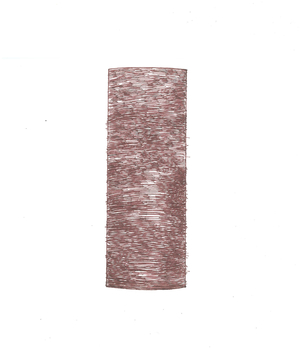 When I first started thinking about The Sniff Box, I wondered how I could make it look different from other perfume blogs. I knew I’d have no problem with the overall look, thanks to my super-talented friend, Leanda Ryan, whose design perfectly reflects the idea of ‘perfume in plain English’.
When I first started thinking about The Sniff Box, I wondered how I could make it look different from other perfume blogs. I knew I’d have no problem with the overall look, thanks to my super-talented friend, Leanda Ryan, whose design perfectly reflects the idea of ‘perfume in plain English’.
But illustrating individual perfumes is a problem, as you’ll gather if you look at other perfume sites on the interweb. The obvious thing to do is to use a ‘pack shot’, generally supplied by the brand in question: it’s what the brands like as that’s how they want you to see their scent, but how many times do you want to see the same cheesy photograph?
The trouble is, if you don’t use a photo of the bottle, what can you use instead? How do you illustrate something you can smell but can’t actually see? It’s interesting to check out what other people come up with, but given that few bloggers can afford to commission photography or illustration, they’re generally stuck with stock shots of things like perfume ingredients – a sprig of lavender, say, or a twist of lemon – which are as cheesy as the pack shots they’re trying to avoid.
It took a while, but finally it struck me: since I can draw, after a fashion, why not draw my own illustrations? And that’s how I began.
All of which is a roundabout way of saying that, when I was trying to draw my bottle of Antaeus this morning, it gradually dawned on me that it is one of the most beautiful perfume bottles I know. It’s also one of the simplest: a tall, square, black-glass container that, if you took away the classy sans-serif Chanel lettering, would bear a more-than-passing resemblance to sinister monolith in 2001: A Space Odyssey.
Designed (or at least commissioned) by Chanel’s long-standing artistic director, Jacques Helleu, and launched in 1981, Antaeus was a kind of dark-side twin to the brand’s only other men’s fragrance at that time, Pour Monsieur (launched way back in 1955). Their bottles may be almost identical in shape, but Pour Monsieur is as cool and transparent as Antaeus is brooding and mysterious, and that reflects the fact that they’re very different scents.
Pour Monsieur is a refined, impeccably discreet fragrance: perfect in its way but perhaps (dare one whisper it?) just a tiny bit dull. Antaeus, by contrast, is a dark sexy scent that was launched just as the disco era crashed and burned: the same year Ian Schrager and Steve Rubell sold out of Studio 54 and the big disease with a little name first reared its ugly head.
Antaeus (the scent) was created by Chanel’s much-fêted in-house perfumer, Jacques Polge, in collaboration with François Damachy, now head of fragrance at Dior). As suggestive as Pour Monsieur is safe, its sexiness comes from castoreum, derived from a secretion extracted from beaver wee (I kid you not), which despite its revolting origins becomes, after careful treatment, a potent perfume ingredient, with its musky, leathery smell.
It’s a warm, slightly spicy leather scent, with a lot of Mediterranean herbs, most notably clary sage and thyme, that most of us would probably associate with hot, rocky mountainsides in southern France and Greece. My nose isn’t yet sensitive enough to identify them, but it also apparently contains labdanum (derived from two different species of Cistus, another Mediterranean shrub), as well as sandalwood and patchouli, which presumably add to the slightly hippyish warmth of the scent.
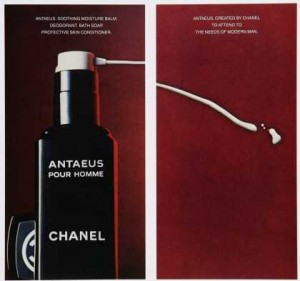 Antaeus became a big best-seller in the early 1980s initially, it seems, among gay men, and with its hints of sex and leather it’s easy to see why. Chanel itself tapped into this trend in 1983 with a delightfully pervy advert (pictured), whose subtext I can leave to your imagination.
Antaeus became a big best-seller in the early 1980s initially, it seems, among gay men, and with its hints of sex and leather it’s easy to see why. Chanel itself tapped into this trend in 1983 with a delightfully pervy advert (pictured), whose subtext I can leave to your imagination.
But gay men, as we’ve often been told, are classic early adopters, and these days Antaeus is just as likely to attract anyone who enjoys a rich and complex scent. It’s long been one of my favourites, for its warmth and easy appeal, but I love its darker origins too: sex (and history) in a bottle.
Chanel
Cuir de Russie
23 November, 2014
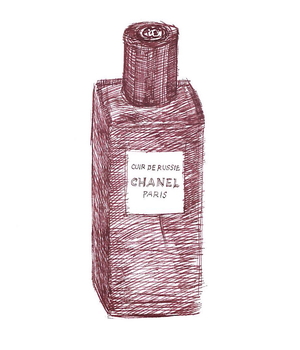 Would you smear yourself with diluted tar? That’s my first question. My second question: would you pay £150 or more to smear yourself with diluted tar? If your answer to either (or both) of these questions is ‘Not on your nelly’, then it’s possible that Cuir de Russie is not for you. If, on the other hand, you have an adventurous spirit and an interest in history, read on.
Would you smear yourself with diluted tar? That’s my first question. My second question: would you pay £150 or more to smear yourself with diluted tar? If your answer to either (or both) of these questions is ‘Not on your nelly’, then it’s possible that Cuir de Russie is not for you. If, on the other hand, you have an adventurous spirit and an interest in history, read on.
Chanel’s Cuir de Russie is widely regarded as one of the most luxurious perfumes you can buy, and there are good reasons for that. It’s one of the perfumes in Chanel’s Les Exclusifs range, all of which use the highest-quality raw materials. And it was concocted – at least in its original form – by Ernest Beaux, the perfumer whose name should really be on every bottle of Chanel No5, since it was Beaux, not Coco Chanel, who created it.
But back to tar. Tar comes in many forms, the best-known being bitumen or asphalt, the stuff that binds road surfaces together and sticks to your shoes in hot weather. You wouldn’t want to dab yourself with bitumen, not least because it smells revolting, but other kinds of tar are a different matter.
Burn wood in the absence of air and you get charcoal, but do the same to the papery sheets of bark that peel off silver birch trees, and out oozes a sticky black gloop with a rich smoky smell. This dense chemical mix of hydrocarbons and phenols is known as rectified birch tar, and it’s packed with delicious molecules such as guaiacol, cresole, catechol, pyrogallol and 5-methyl-pyrogallol dimethyl ether.
In Russia, which has no shortage of birch forests, birch tar became an important export product from the sixteenth century on. It had many uses, not least as an all-purpose glue, but the reason I’m writing about it now is because of the discovery that, if freshly tanned cowhide was impregnated with birch-tar oil, the resulting leather was not only waterproof and mould-resistant, but also developed an extremely pleasant smell.
Russian leather – or cuir de Russie, as it was known in France – gained an unrivalled reputation for quality, especially at the luxury end of the market. Ernest Beaux, who was born in Moscow and followed his brother into a job at the imperial perfumers, Rallet & Co, would have discovered the alluring smell of tar-impregnated leather early on, and it must have carried nostalgic memories for him when he left Russia for Paris in the wake of the Revolution.
The relentlessly social-climbing Gabrielle Chanel, for her part, had a Russian connection of her own: Grand Duke Dmitri Pavlovich, one of Rasputin’s assassins, with whom she had a short affair in 1920-21. It was through Pavlovich that Beaux first met Chanel, but which one of them came up with the idea of a perfume called Cuir de Russie isn’t clear. It was launched in 1924, three years after No.5, and was worn, from the first, by both women and men.
Though the use of rectified birch tar in perfumery is now restricted in the EU, and Cuir de Russie was ‘reorchestrated’ (for which read ‘reformulated’) by Chanel’s in-house perfumer Jacques Polge in 1983, it is still, it’s said, a fair approximation of Ernest Beaux’s original scent, though perhaps a little less rough-edged than the original.
Whatever the truth – and truth is a vanishingly rare commodity in the perfume industry – it’s still a wonderful smell, smoky and leathery and smooth, with no single ingredient taking centre stage. Beaux added aldehydes (the chemicals that give No.5 its glittery zing) but Cuir de Russie also includes jasmine, iris, sandalwood and rose, among other luxurious things, and it’s this balance of ‘masculine’ and ‘feminine’ scents that make it both immensely alluring and oddly difficult to place.
If ever a perfume was androgynous, then Cuir de Russie is it. Though I’m a great fan of ambiguity, and I certainly appreciate its sheer, unadulterated luxury, I have to admit that its mix of masculinity and femininity, powdery sweetness and smoky bitterness, does sometimes make it rather hard to wear. Still, it’s wonderfully long-lasting, without being overpowering, and for an expensive scent that’s surely a good thing (though as it comes in a stonking 200ml bottle, Cuir de Russie is actually better value than a lot of supposedly ‘cheaper’ perfumes). As for whether I’d wear diluted tar, I think the answer is yes.
Givenchy
Givenchy Gentleman
25 October, 2014
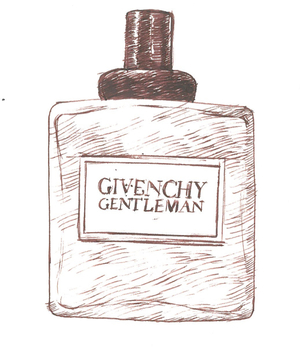
I don’t often, to be honest, feel very hippyish, but on the odd occasions when I do then Givenchy Gentleman suits my mood very well, with its distinct patchouli smell.
The original version was released in 1974 to tie in with couturier Hubert de Givenchy’s first ready-to-wear boutique, and it must have seemed bang on trend back then. Created by Paul Lèger (who also had a hand in the big-selling women’s perfume, Anaïs Anaïs), it was quickly hailed as a masterpiece, but has since been turfed out of the perfume pantheon, not least because the original recipe was fiddled about with a few years ago – presumably to save money and comply with tighter industry regulations.
If Givenchy Gentleman contained nothing but patchouli I wouldn’t be writing this review, but Lèger’s long list of ingredients included cinnamon, vetiver and something that approximates to the smell of leather. The last two in particular give the scent its appealing earthy, masculine character and stop it from being too sweet or cloying; it also contains (or contained) a whole host of other fragrance ‘notes’, including lemon and bergamot, tarragon, cedar and sandalwood, which added to Givenchy Gentleman’s complexity and depth.
It may not be the perfume that once it was, but I haven’t yet found a more wearable patchouli-based scent for men, though I have to admit that the latest version (has it been reformulated again?) starts well but then develops a slightly sour, unattractive undertone on the skin.
It’s been repackaged too, and the latest bottle has such a cheap label that if I didn’t know better I’d be inclined to suspect I’d been sold a dodgy knock-off from a market stall. Sadly it seems that the knock-off effect is entirely Givenchy’s own.
Guerlain
L’Homme Idéal
11 October, 2014
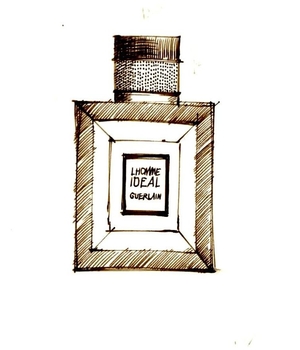 I have before me a bottle of Amaretto liqueur, which I’m tempted to drink, though seeing as it’s ten in the morning I probably shouldn’t. I also have a bottle of the latest men’s perfume from Guerlain, L’Homme Idéal, which you’ll be relieved to hear I won’t be drinking either.
I have before me a bottle of Amaretto liqueur, which I’m tempted to drink, though seeing as it’s ten in the morning I probably shouldn’t. I also have a bottle of the latest men’s perfume from Guerlain, L’Homme Idéal, which you’ll be relieved to hear I won’t be drinking either.
The reason for this conjunction is that several reviews of L’Homme Idéal have suggested that it smells distinctly like Amaretto, so I’m testing whether they do – and the answer is that, side by side like this, they don’t. Amaretto smells far sweeter and more almondy, with a touch of bitter almonds that L’Homme Idéal lacks.
All the same, the Amaretto comparison should give you some idea of L’Homme Idéal’s character: burnt-sugar sweet and, yes, really quite almondy. It’s a smell that won’t appeal to every man (though I suspect a lot of women will like it), and in fact the perfume hasn’t exactly been greeted with universal acclaim, though personally I rather like it.
Launched in June 2014, L’Homme Idéal was created by Thierry Wasser, who has been the company’s in-house perfumer since 2008; I’ve reviewed one or two of his other perfumes, including Guerlain Homme l’eau Boisée and the wonderfully refreshing Cologne du Parfumeur. Its ingredients include orange, rosemary, cedar and vetiver, but the two that most people pick up on are tonka beans and almonds, with a bit of leather thrown in.
Tonka beans are used in a wide range of perfumes, and they have a warm, slightly sweet smell, which many people find reminds them of food, especially chocolate and vanilla. The scent of almonds is less often used (though James Heeley’s fine but painfully overpriced L’Amandière smells of almost nothing else), but they’re what give L’Homme Idéal its distinctly foody, burnt-sugar smell.
Luckily – from my point of view at least – L’Homme Idéal isn’t nearly as sickly-sweet as Thierry Mugler’s revolting Angel, or even as cutesy sweet as Black XS for Men from Paco Rabanne. Sweet smells, like sweet tastes, have something a bit childlike and unsophisticated about them, but Thierry Wasser has toned the sweetness down here by surrounding the tonka beans and almonds with the smells of freshly-sawn wood and new leather, as well as a hint of dry, earthy vetiver.
All in all this is a nice enough fragrance, but it’s a bit too muted and polite to really stand out for me. That may well be intentional, since it seems to be squarely aimed at the big middle market, whose buyers are not widely considered to be particularly adventurous or sophisticated. Mind you they’re also considered to be virtually illiterate, if Guerlain’s French-pretentious marketing guff is anything to go by.
Yes, it’s same old tired perfume bollocks yet again: ‘The ideal man is a myth. His fragrance, a reality. Guerlain decodes men’s aspirations and creates for them a concentrate of ideal. The ideal fragrance? Smart, handsome, strong. Three adjectives, three accords for this fresh woody fragrance that will trigger your full potential.’ As a copywriter myself I’d be ashamed to have written that, though I’m sure whoever did write it was handsomely paid. (The box, incidentally, sports a typographical car-crash that seems to read, ‘Be You. No Need to Anymore Have Your Fragrance.’ Got that? Me neither.)
Still, the smell is nice enough, and the bottle is actually far better than most: a chunky glass square with (according to Guerlain) ‘radical’ matt black lacquer sides and a crisply detailed cap that apparently ‘borrows its guilloché detailing from the world of watchmaking.’ I think they should have borrowed the cap from an Amaretto bottle, but there you go.